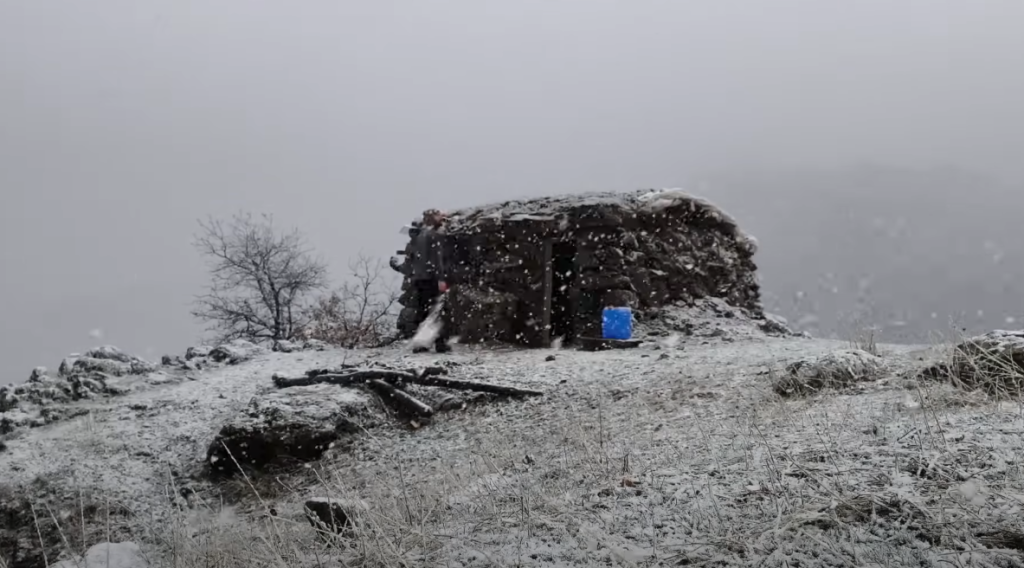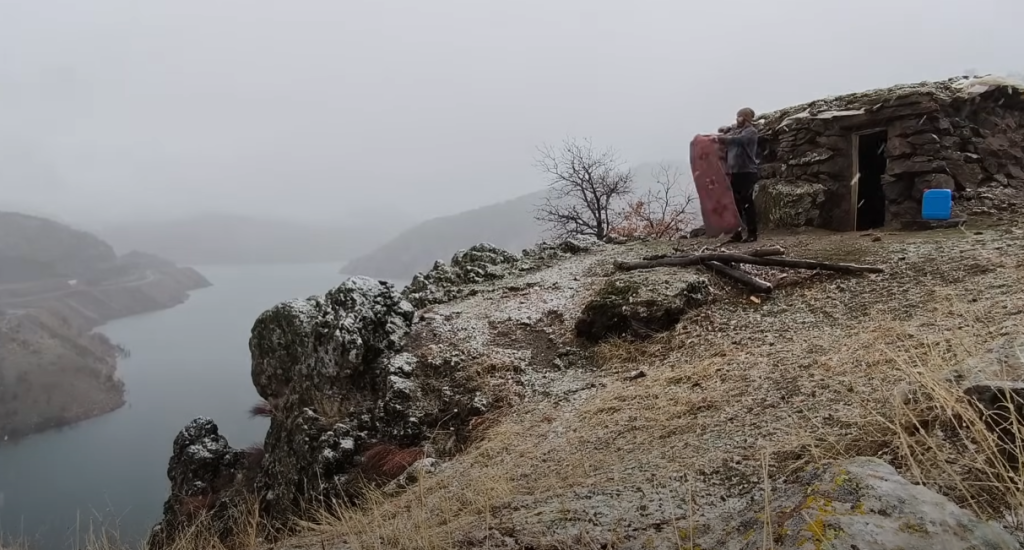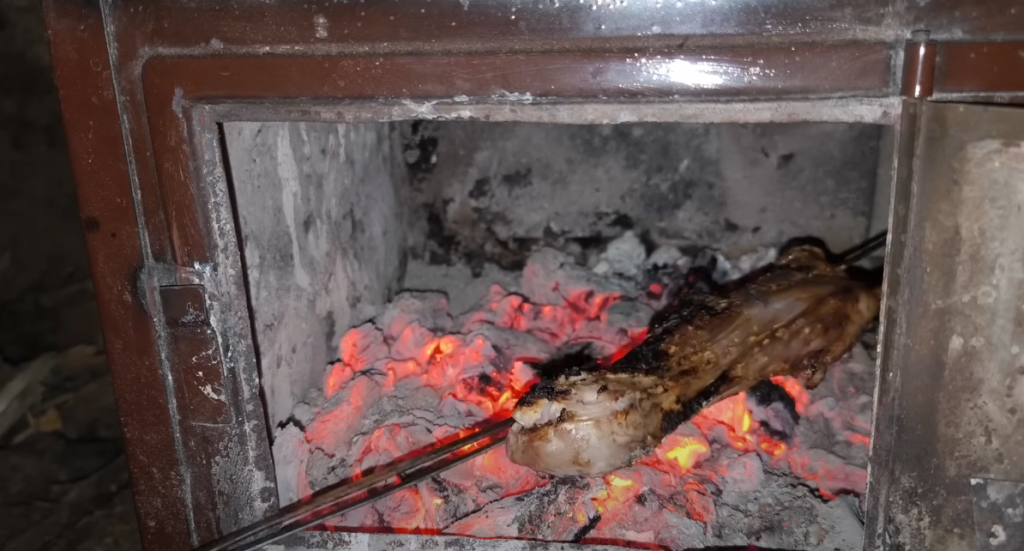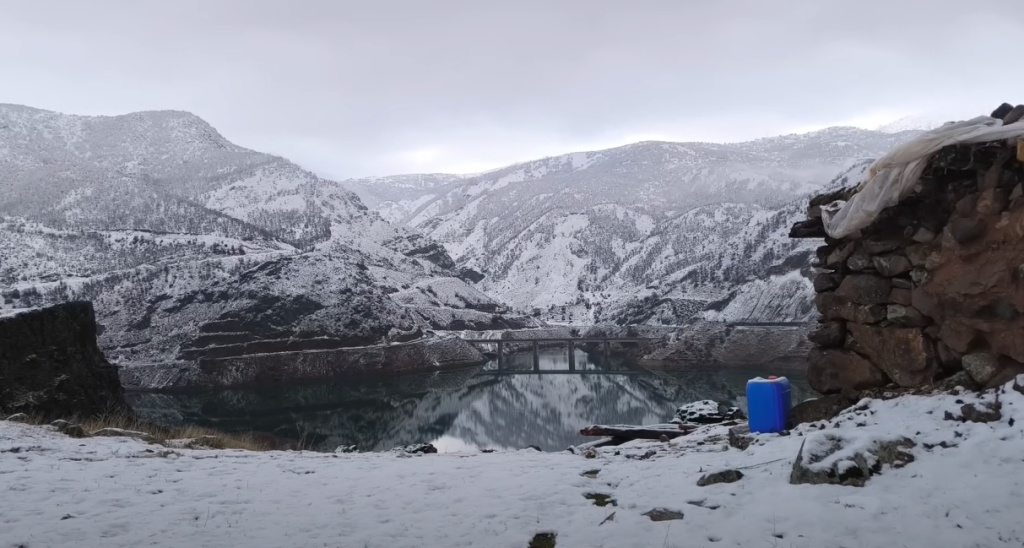Here’s an immersive narrative and guide on life in a shelter under heavy snow, blending survival strategies with the stark beauty of winter survival:

The Snowbound Shelter: A Winter Survival Tale
The blizzard had come unexpectedly, blanketing the world in an unrelenting sea of white. Finding safety beneath the snow wasn’t just a necessity—it became a testament to resilience and the power of human ingenuity. Your snow shelter was more than protection; it was a temporary sanctuary amidst the harshness of winter.
Day 1: Building the Shelter
Finding Safety
As the wind howled, you searched for the right spot to build your refuge:
Leeward Side of a Hill: A natural windbreak shielded you from the worst of the storm.
Deep Snowbank: A large drift provided the material and insulation needed for your shelter.
Construction
Snow Cave:
You dug horizontally into the drift, creating a narrow entrance and a larger sleeping chamber.
The ceiling was arched to prevent collapses, and a small ventilation hole allowed fresh air to flow.
A raised sleeping platform kept you off the cold snow floor.
Quinzhee Shelter:
You piled snow into a mound, let it settle, and hollowed it out.
Snow packed tightly provided excellent insulation, trapping body heat.
Insulation and Warmth
Flooring: Pine boughs and dry leaves created a barrier between you and the snow.
Entrance Block: A piece of snow or a tarp partially covered the entrance, retaining heat while allowing airflow.

Day 2: Settling In
The snowstorm continued, its relentless force transforming your shelter into a cocoon of silence. Inside, life became about maintaining warmth and conserving energy.
Staying Warm
Layered Clothing: You wore thermals, a fleece jacket, and a waterproof outer layer, shedding or adding layers to regulate sweat and body heat.
Heat Sources:
Small candles added both light and warmth, carefully placed to avoid melting the ceiling.
Hand warmers provided quick relief for cold extremities.
Managing the Snow
Clearing the Entrance: Regularly, you shoveled snow away from the entrance to prevent yourself from being buried.
Maintaining Ventilation: A stick was used to keep the air hole open, preventing carbon dioxide buildup.
Day 3: Sustenance
Snowbound, food and water became your primary focus.
Water:
You melted snow over a small camping stove, careful not to consume unmelted snow to avoid hypothermia.
A dark container left outside during daylight helped absorb sunlight, melting snow passively.
Food:
Rationing supplies was critical. You relied on:
High-energy snacks like nuts, chocolate, and jerky.
Lightweight dehydrated meals rehydrated with melted snow.

Day 4: Passing Time
Life in the snow shelter was quiet, forcing you to embrace the simplicity of survival.
Activities:
Equipment Maintenance: Sharpening tools, waterproofing boots, and checking gear kept your mind and hands occupied.
Strengthening the Shelter: You reinforced walls and ensured no weak spots formed due to the heat from within.
Mental Focus:
Journaling or sketching on scraps of paper helped stave off boredom.
Simple exercises like stretching or push-ups kept your body active.
Day 5: Facing Challenges
The weight of heavy snow presented new obstacles.
Structural Integrity:
You regularly checked for sagging in the ceiling, reinforcing it by packing more snow against the outside.
If melting occurred near the entrance, you used sticks and branches to create a supportive frame.
Psychological Resilience:
The isolation and silence could be daunting. You combated this by focusing on the routine of survival—melting snow, preparing food, and maintaining the shelter.
Day 6: The Beauty of Snowbound Life
Despite the challenges, there was an undeniable beauty to life under the snow.

Silence: The heavy snow muffled the world, creating a profound stillness.
Light: The interior glowed faintly during the day, as sunlight filtered through the snow walls.
Connection: You felt a deep bond with nature, learning to respect its power and adapt to its demands.
Day 7: Emerging from the Shelter
When the storm finally passed, you pushed open the entrance and stepped into a world transformed. The landscape sparkled under the sun, the fresh snow glistening like a sea of diamonds. The shelter, now a symbol of your resourcefulness, had kept you safe and alive through the harshest of conditions.
Epilogue: Lessons from the Snow
Life in a shelter under heavy snow taught you invaluable lessons:
Adaptability: You learned to work with nature, using its challenges to your advantage.
Resilience: Each day reinforced your determination and ingenuity.
Gratitude: The simplest comforts—a warm meal, a dry space—became treasures in the frozen wilderness.
As you left the shelter behind, you carried these lessons with you, forever changed by the experience of living beneath the snow’s protective embrace.